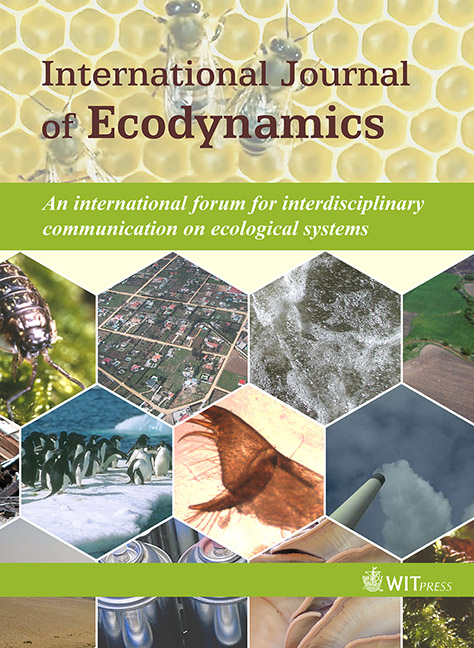Ecological utility analysis: determination of interaction types between organisms in ecosystems
Price
Free (open access)
Volume
Volume 2 (2007), Issue 2
Pages
8
Page Range
88 - 96
Paper DOI
10.2495/ECO-V2-N2-88-96
Copyright
WIT Press
Author(s)
B.C. Patten, S.J. Whipple
Abstract
Environ theory and analysis is an input–output (I/O) network theory of environment based on conservative interchange of energy and matter between system components. Utility analysis is an extension of basic I/O methodology that enables determination of proximate and ultimate interaction types between components by comparing contributions from and to intersecting I/O environs that mediate pairwise interactions. Ordered sign pairs of computed utilities specify and quantify nine interaction types. Our study asks two questions: (1) How do we unscramble complex webs to determine ultimate interaction types between components in ecosystems? (2) Is unweighted digraph structure, as widely investigated in food-web and other network theories, by itself sufficient, or must linkages also be quantified (weighted)? Utility analysis of `community modules', which are small-order dissipative steady-state networks, indicated three modes of determining interaction types: (1) Structural determination – in certain simple webs, interactions are determined by network topology alone, without regard for numerical flow values; (2) Parametric determination, endogenous – in other webs, interactions are internally determined by flow values within the system. Both network topology and interior flow magnitudes combine to determine interaction types; (3) Parametric determination, exogenous – in a third class of webs, interactions are externally determined by boundary flows into the system from outside. In these webs, a combination of network topology and external inputs determines the interaction types. Characteristics of these three categories of networks are described, and it is shown that interactions in ecosystems, such as competition, predation, and mutualism, are typically not fixed, as often assumed, but vary with network coupling patterns and flow magnitudes, which are always fluid and changing.
Keywords
community modules, ecological interaction types, ecological theory, ecological utility analysis, environs, input–output analysis, systems ecology




